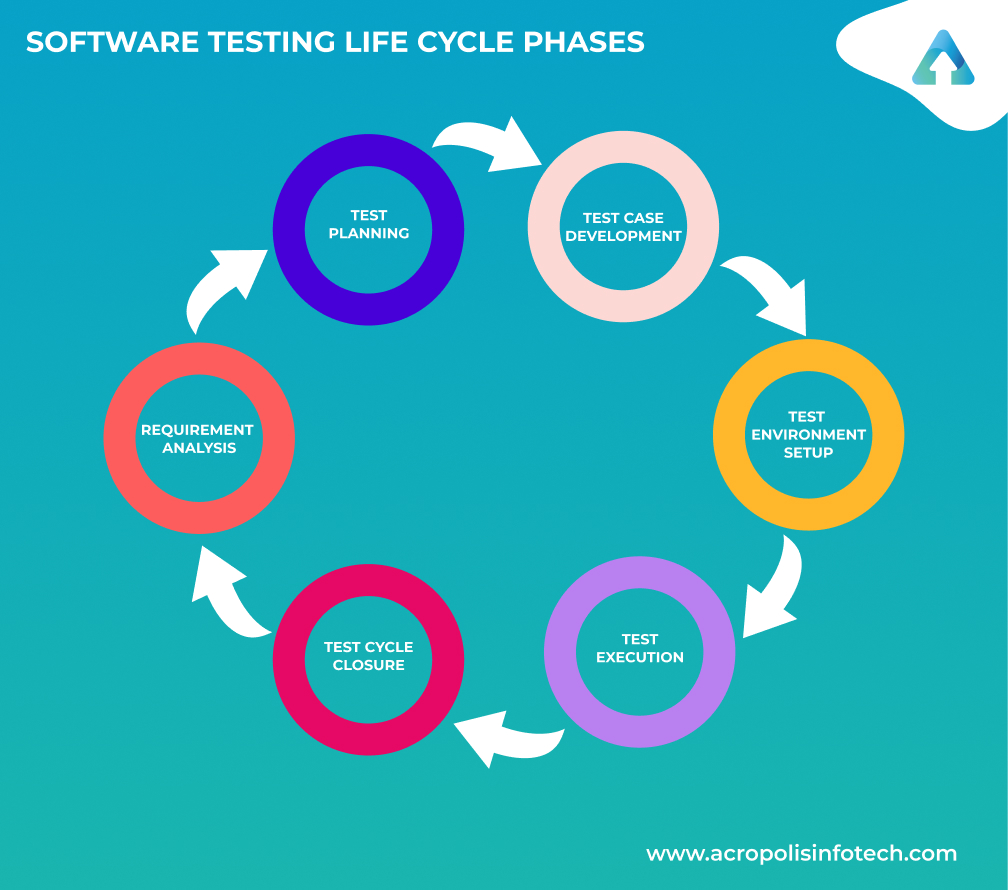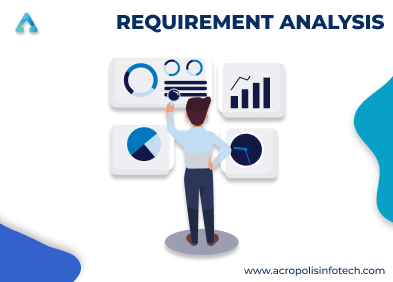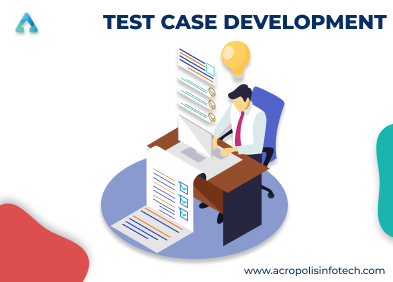Over the past decade, the Software Testing Life Cycle (STLC) role in software development has increased significantly. This cycle involves all the critical parameters to assist Software Testers in verifying the code’s standard and ensuring smooth deployment.
Presently, STLC is an integral part of the software development process because it helps engineers to address software bugs comparatively faster and in an exceedingly more accurate way.

Below, you can find a quick overview of the Software Testing Life Cycle (STLC) and its different stages to understand the whole cyclic process of software testing.
An Overview: STLC stands for Software Testing Life Cycle. It is the sequence of activities that are performed by the Quality Assurance teams to find defects at the early stage of the software development. These activities are performed to analyze a software application’s functionality to identify any functional or non-functional issues. To provide a quality product, it evaluates whether the developed software meets the set requirements and finds any defects in the software.

STLC Phases:
1: Requirement Analysis: The software requirement phases include high-level business demand and architectural requirements. It also details the way to create and implement functionality and specific system requirement.
Throughout this Software Testing Life Cycle, software test engineers collaborate within and out of doors of functional teams to contextualize their testing method. When performing requirement analysis, it’s common to carry out brainstorming sessions, identify gaps within the requirements, and prioritize various analyses.

When there is uncertainty or a lack of requirement specification, the QA team will consult the event or business teams to assist, define and plan the testing strategy.
2: Test Planning: Finding from requirements or product analysis becomes a formalized quality assurance strategy with test planning.
The Test Lead decides on the resources and efforts needed to research a release. A well–documented test plan keeps everyone in sync, from Test engineers to other teams. When other parts of the organization, like Software Engineers performing unit tests and producing hotfixes, are involved in testing and issue resolution, this method becomes even more beneficial to everyone.
The scope, objectives, types of automated and manual tests, and specifications, are all laid out in the test plan for quality assurance (QA) initiatives. Once test management has established these elements, the responsibilities and deadlines for the task are established. After the completion, it is finally possible to determine the deliverables which the testing team will produce after the completion.
3: Test Case Design & Development: After successful completion of test planning, test cases are executed. During this phase, testing teams start developing and executing test cases.

According to its requirement, the Quality Team compiles test data as well as writes test cases. Team members and also the Test Lead evaluate the prepared test cases. RTM (Requirement Traceability Matrix) is also prepared separately during this step. This format is used within the industries to keep track of requirements. Each test is related to a selected requirement.
5: Test Execution:
During this phase of the Software Testing Life Cycle (STLC), the product must be thoroughly tested, including functional and non-functional testing performed by the Software Test Engineer. During The STLC, the Software Test Engineer will identify and report specific flow during the execution of test cases and track how well the system performs compared to its specification. Software Test Engineers frequently re-test products after Software Engineers have fixed them to confirm that no new defects have propped up.
6: Test Cycle Closure:
At this stage of the Software Testing Life Cycle (STLC), all tests are completed, including reports of their progress, collecting test completion matrices, and reviewing the results. Meetings and discussions are held among Quality Team members to debate future strategies which are usually determined and supported by lessons and findings from the present test cycle. The goal here is to future-proof the testing procedure.
Conclusion:
According to the current competitive situation in the IT industry, the quality of the product should be of world-class level. STLC process covers all these criteria to ensure the quality of any product in the software industry.
We at Acropolis, with our highly experienced resources, follow the set criteria of quality with standardized procedures to ensure the quality goals are met. The process followed by us looks after and finds all the defects at the early stages of software or application development to deliver the defect-free product to the End User.
Know more about Why is App Development Important for Your Company?
To get more highlights or consultations on our STLC services, kindly reach us at [email protected]. You may also give us a call directly at +1716938486 or WhatsApp us at +9999876594











